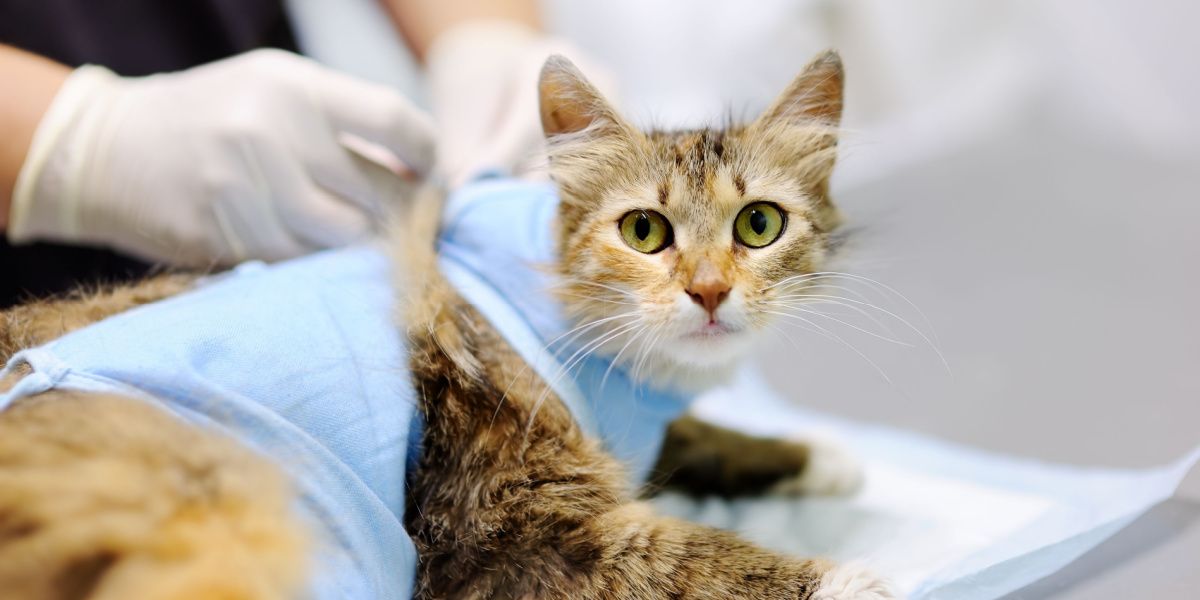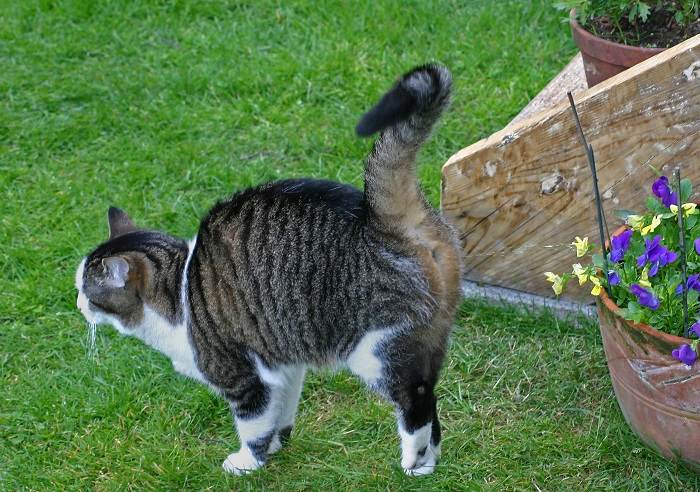
As cat owners, the topic of spaying and neutering cats is an important one. Whether you have a new kitten or you’ve taken on a stray or feral cat, it’s paramount that you get them spayed or neutered. Spaying and neutering plays a key role in cat population control along with health and behavioral benefits for your cat.
Spaying or neutering your cat is almost always recommended to prevent pregnancy and eliminate hormonally linked behavioral issues. Kittens should be spayed or neutered between 4 to 6 months of age. Allowing a female cat to have one litter of kittens before being spayed offers no health benefits for your cat and is unnecessary.Key Takeaways
Many cat parents ask me, “Is it really necessary to neuter/spay my cat? Is there an anesthetic risk? Should I let my cat have one litter before spaying her? What is the best age to neuter my cat?” Read further as we guide you through everything you need to know about spaying and neutering cats.
Spaying Vs Neutering in Cats Explained
Spaying in cats is the surgical procedure that removes a female cat’s reproductive organs to prevent her from getting pregnant. It’s also called an ovariohysterectomy when both the ovaries and uterus are removed or an ovariectomy when only the ovaries are removed.
Neutering in cats is the surgical procedure that removes a male cat’s testicles to prevent reproduction and reduce hormone-driven behaviors. It’s also called castration in medical terms.
Overview of Spaying and Neutering Cats
Spaying and neutering is crucial to the population control of cats, which in turn protects wildlife populations. With rescues and animal shelters full of stray and rescued cats across the world, it’s never been more important to prevent unplanned litters by spaying or neutering your cat.
Also Read: How Much Does It Cost to Spay or Neuter a Cat?
Feeding kittens and finding good homes can be extremely challenging and costly, and because cats can get pregnant again almost immediately after weaning their kittens, more kittens just keep coming.
What Do Spaying and Neutering Involve?
Neutering, or castration (male cats), and spaying (female cats) involve surgically removing the cat’s reproductive organs. In males, a veterinarian removes the testicles and in females a vet removes the ovaries and uterus.
These surgical procedures are performed under general anesthetic at your veterinary clinic, usually as an outpatient procedure. Your cat will have some fur shaved where the surgery is performed and female cats will have some stitches. Male cats don’t usually need stitches unless the surgery is more complicated.
Your cat will get pain relief and might be sent home with an Elizabethan collar (also called an E-collar or cone) . Cats are usually feeling back to their normal selves by the next day and your vet will likely recommend one to two postoperative checkups at the veterinary clinic seven to 10 days after the operation.
When Is the Best Time to Neuter Your Cat?
Now that we know what the spay and neuter procedures involve, when is the best time to neuter your cat? If you ask multiple vets, it’s likely that the response will differ slightly from vet to vet. Some vets might recommend spaying or neutering at 6 months of age, while others might recommend doing it earlier at 4 months.
Cats can become sexually mature from 4 to 6 months of age, which means that females can become pregnant very young. I personally neuter cats from 4 months of age to prevent unplanned pregnancies and avoid adding to the overpopulation of cats.
Traditionally, there were some concerns that spaying or neutering cats very early might contribute to health or behavioral issues, but recent evidence has proven otherwise. If anything, surgical technique and anesthetics have improved greatly for young feline patients making the procedure safer.
In summary, kittens can be spayed or neutered from 4 to 6 months of age. Kittens that go outdoors should be neutered as soon as possible to prevent mating and potential pregnancies. Indoor-only kittens can wait until 6 months to be spayed or neutered as there is no risk of pregnancy. Always discuss the timing of your cat’s neutering with your vet as their recommendations might differ slightly and they know your cat’s case best.
A common myth is that female cats should be allowed to have one litter of kittens before being spayed. This offers no health benefits for your cat and is unnecessary, so plan to spay your kitten from 4 to 6 months of age.
Also Read: 10 Signs Of Pregnancy In Cats
Why Spaying Female Cats Is Important

Chris Vanderhoof DVM, MPH / Cats.com
Spaying female cats is important for numerous reasons, including population control and for health and behavioral benefits for your cat. You should always spay your female cat (unless you intend to breed her or if your vet recommends that you do not spay for a specific reason).
What Happens if You Don’t Spay Your Female Cat?
Intact female cats (cats that haven’t been spayed) might behave differently to spayed cats. Cats are seasonally polyestrus, which means they have multiple heat cycles during the breeding season. If a female cat doesn’t become pregnant during a heat cycle, they’ll automatically come back into heat again.
Female cats in heat can be restless, irritable and even distressed. Intact females might also try to escape to find a male cat and are at increased risk of injury, catching diseases (e.g., feline immunodeficiency virus (FIV) and cat flu) and becoming pregnant if they get outside. One female cat that hasn’t been spayed, can produce anywhere from 100 to 200 in her lifetime. That’s a lot of kittens!
Lastly, female cats that aren’t spayed are at risk of a serious uterine infection called pyometra, which requires emergency surgery. They are also at increased risk of cancer in their reproductive tract.
Benefits of Spaying Your Female Cat
As you can imagine, spaying your female cat has many health benefits along with preventing unwanted pregnancies. These benefits include:
- No pregnancy (preventing overpopulation)
- More relaxed temperament because cat is not coming into heat
- Less risk of injury
- Less risk of catching diseases
- Reduced occurrence of cancer in the reproductive system
- Less chance of sexual-related urine marking (urine spraying in females)
Why Neutering Male Cats Is Important
Similar to spaying your female cat, neutering or castrating your male cat has many benefits. In the wild, unneutered male cats (also called tomcats) spend much time wandering around trying to find a female cat in heat. They’ll often fight with other male cats over territory and sustain many injuries. Pet cats can act similarly if they aren’t neutered and get themselves into dangerous situations.
What Happens if You Don’t Neuter Your Male Cat?

Unneutered male cats are more likely to spray urine and wander in search of females.
Male cats that aren’t neutered are prone to roaming and escaping. In their search for females and defending their territory, they often catch diseases through cat bites (FIV or FELV) and are at greater risk of injuries, including cat bite abscesses and road traffic accidents.
A huge issue with indoor intact male cats, is urine spraying. This is a normal behavior that male cats perform as part of their scent marking and communication, but understandably it’s something that we don’t want in our home. The smell of tomcat urine is extremely pungent and often referred to as “musk.” Urine spraying is a very common behavioral trait in male cats and it’s much worse when they aren’t neutered.
Benefits of Neutering Male Cats
Neutering male cats helps to reduce the sex hormones like testosterone and many of the unwanted (but normal cat behavior) side effects. These include:
- Less occurrence of urine spraying and marking
- Reduced aggression and fighting with other cats
- More relaxed
- Less wandering
- Reduced chance of injury and catching diseases
Are There Any Complications With the Spaying and Neutering Procedures?

After the spay or neuter procedure, your cat will be kept warm and closely monitored until they wake up from the anesthesia. Chris Vanderhoof DVM, MPH / Cats.com
Like any procedure in animals or even humans, there is always the chance of complications with a surgery. These can include anesthetic complications, postoperative pain, infection, or wound breakdown. In rare cases these can be fatal, but thankfully in most young, healthy cats the risk is minimal.
Cat neuters are part of a vet’s bread and butter and are commonly performed weekly or even daily in most veterinary clinics. Vets are very familiar with the procedure and most vets would be happy to discuss the spaying or neutering procedure and anesthesia with you.
If you’re worried about the surgery, discuss this with your local veterinarian. They might offer pre-anesthetic bloodwork to check for any underlying illness prior to the surgery and intravenous fluid therapy (a IV drip) during the surgery.
Will My Cat Act Differently After Neutering?
In my opinion, the answer is no. Some cats might be a little calmer and more relaxed, especially if they were very restless and irritated previously due to being in heat. Their personalities and temperaments will be the same.
Spayed or neutered cats can sometimes have a tendency to gain weight after the procedure due to a slightly lower metabolic rate. If your cat is gaining weight, discuss this with your vet. It usually involves changing their portion sizes or opting for a different food.
How Much Does a Neuter or Spay Cost?

Cost can vary depending on several factors, including where you live and whether you opt for pre-anesthetic bloodwork and IV fluids. Chris Vanderhoof DVM, MPH / Cats.com
The cost of a spay or neuter depends on your veterinary clinic and where they are located. In general, urban clinics might be a little more expensive than country clinics. Males are usually a bit cheaper to neuter compared to females as the male cat neutering procedure is less complicated.
Spaying or neutering your cat could cost from anything to $60 to $100 in some clinics and up to $300 to $400 in others. This will depend if you opt for pre-anaesthetic bloods and intra-operative fluids as these will increase the cost of spaying or neutering.
Also Read: How To Keep Your Cat From Jumping After Surgery
Neutering your cat has endless benefits and it should always be done unless there’s a valid reason not to. Our friendly guide has highlighted the benefits of spaying and neutering, when to spay or neuter, and the spay/neuter procedure. Always discuss neutering with your vet at your kitten’s initial veterinary checkups, and get it scheduled before any unplanned pregnancies occur.
Frequently Asked Questions
What is the best age to spay and neuter cats?
Cats should be spayed or neutered from 4 to 6 months of age. If they have access to outdoors, cats should be neutered as early as possible to prevent unwanted pregnancies. Discuss this with your vet at your kitten’s initial checkups.
What should I do to prepare for my cat to be spayed or neutered?
Your vet will advise you on how to prepare before your cat gets spayed or neutered, but usually they’ll advise a period of fasting before the surgery where your cat isn’t allowed any food. If possible, it’s worth taking a few days off so you can be home with your cat to monitor them after the surgery. Discuss the procedure and cost of surgery with your vet beforehand so that you’re fully informed.
How long does it take for cats to recover from spay and neuter?
Cats are usually feeling back to themselves the day after surgery. They need to rest for a period of seven to 10 days and will usually have a postoperative checkup with their vet.
Can cats use litter box after being spayed?
Yes, cats can use their litter box after being spayed. If your cat is struggling to use their litter box or toileting in other places around the house, contact your vet. It may be that your cat is uncomfortable and in pain. If your cat hasn’t urinated within 12 to 24 hours after a spay operation, always contact your vet.
What age is too late to spay a cat?
Technically there is no age that is too late to spay a cat. However cats can become pregnant from 4 to 6 months of age, so it’s advisable to spay them before this happens.







